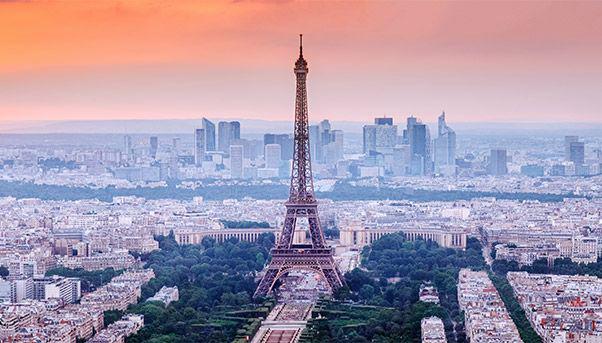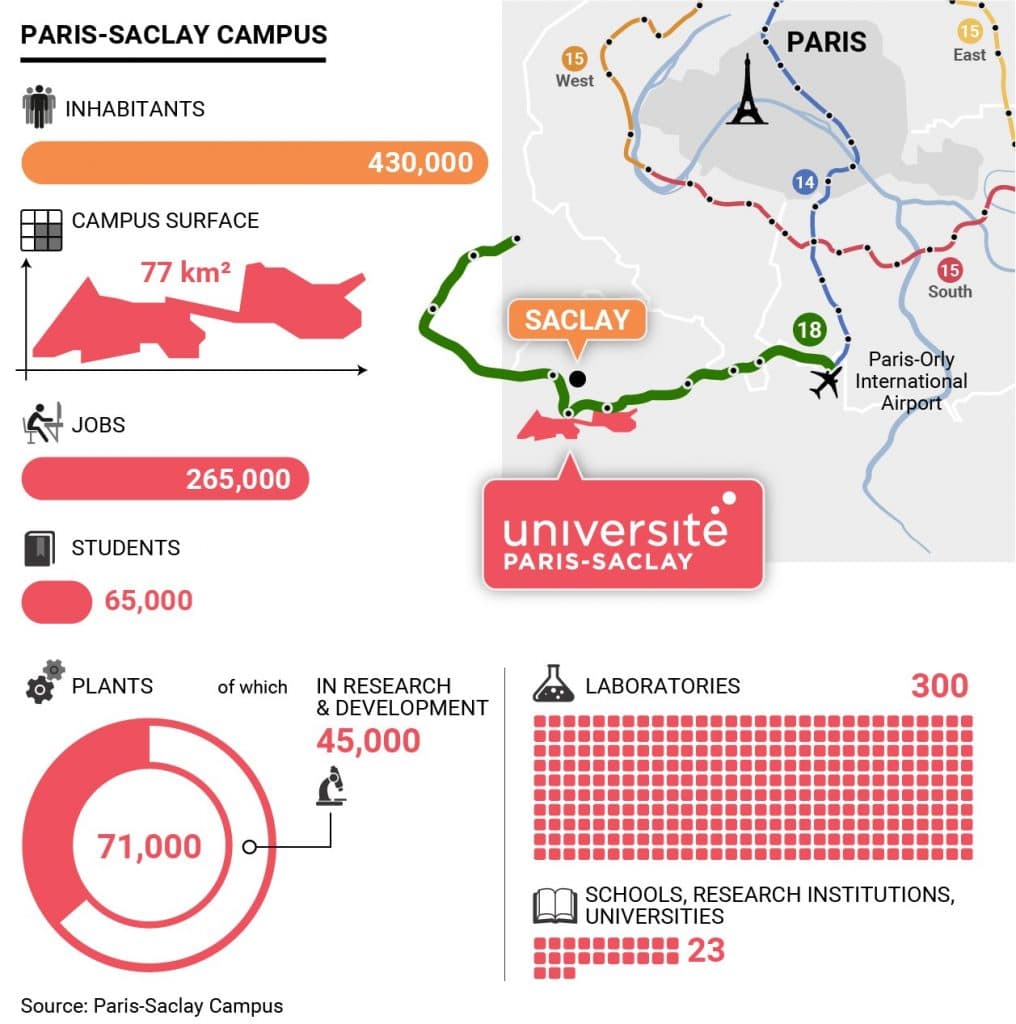
Past the famed boulevards of Paris, past the apartment blocks on the outskirts surrounding the city, the road crosses the green hills of the Ile-de-France and heads south. Twenty kilometres from the centre of the French capital, in the middle of a forest which continues as far as the eye can see, the futuristic buildings of the Paris-Saclay business cluster greet the visitor with universities, research centers of large companies, and hospitals.
The Paris-Saclay campus has grown like a mushroom in this area of 430,000 inhabitants, and is now one of the ten most important scientific centres in the world.
Here, along with the grandes écoles (advanced training institutes) and public research centers, thousands of private companies operate, mainly active in seven sectors: information and communication technologies, health, energy efficiency, aerospace, defense, security, mobility.
This large area accounts for over 15% of the scientific research activity carried out across France, and which will soon be connected to the heart of Paris by the Grand Paris Express new rapid transit rail lines.
The new Grand Paris Express Ligne 18 is part of this massive project designed to unite the Ile-de-France region’s towns with the capital, making it easier for people to move between Paris and the surrounding areas and thus supporting the development of the entire region. This 200-kilometre (124-mile) megaproject involves four new metro lines that will encircle Paris. Construction on many portions of it has already begun, with Salini Impregilo among the builders. Line 18 should be up and running in 2026.
The new transport link will further boost the appeal of the Paris-Saclay universityand will help achieve the French government’s goal of transforming it into the Silicon Valley of Europe.
The metro that will unite the science cluster with Paris
The station for the new Line 18 of the Paris subway will stop near the heart of the Paris-Saclay campus, connecting it with Orly Airport and the city, as well as with Versailles.
The 35-kilometre (21-mile) line will have 10 stations, three of which will be connected to the existing transport network (other metro lines, trains and buses), and will reach 13 municipalities affecting 335,000 inhabitants. It will carry 100,000 passengers every day. It is part of a 200-kilometer (124-mile) megaproject for four new subway lines circling Paris called the Grand Paris Express. Construction on many portions of the Grand Paris Express has already began, and Salini Impregilo is among the firms involved. Line 18 should be up and running in 2026.
Once finished, the line’s impact will be significant for the entire area because – according to the Grand Paris Express website – travel times between Versailles and Orly will drop from 48 to 30 minutes, and travel between Massy Opera and Chatelet will fall from 53 to 34 minutes.
The distances will be halved, and France’s most important scientific campus will become a natural outgrowth of the capital.

Project Grand Paris-Saclay: A magnet for big investors
The campus received a huge boost in 2002 when French diary giant Danone was the first multinational to open its research center at Paris-Saclay. After some initial skepticism, many others followed in Danone’s footsteps. In just a few years, Thales, Elecricité de France, Servier Laboratories, Kraft Food and Total opened their offices in Paris-Saclay. Their example was then followed by thousands of medium-sized companies, and by universities as well as public and private research centres.
French institutions, right from the start, have supported the transformation of this town into a high-added-value area.
In 2006, President Jacques Chirac declared the development of Paris-Saclay to be of “national interest.” In 2009, the area was placed under direct control of the state, thus over-riding the veto powers and influence of local authorities and laying the foundations to develop 7,700 hectares (over 19,000 acres).
Thanks to the state’s support over the years, 23 large schools, from the Cachan Normale to the Polytechnic to the universities of Paris, have opened their headquarters there.
This strategic cluster of knowledge must be well-connected to Paris. That’s why Line 18 was designated a public utility infrastructure in March 2017, and its construction was prioritised as necessary to continue the development of the area.

